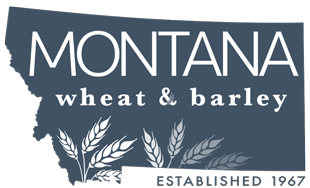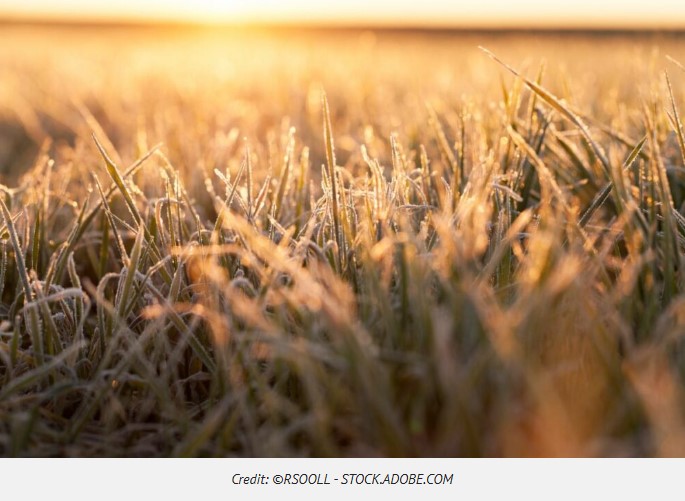KANSAS CITY, MO 1-29-25 — Arctic air descended over key winter wheat growing areas of the US Plains and Midwest in mid-January and spurred reports that up to 15% of that crop might have succumbed to “winterkill.” If such damage occurred, wheat fields won’t show signs of it until the crop emerges from dormancy and plants turn black or have damaged leaves.
Massive snowstorms in early January laid down a blanket of frozen precipitation protection over most of the primary US winter wheat production areas. By the third week of 2025, snow cover had receded in the central and southern Plains where hard red winter wheat is grown but remained intact over parts of the soft red winter wheat Central states. Temperatures on Jan. 21 descended well below freezing into the minus-5-degrees Fahrenheit (minus 21 degrees Celsius) range in a polar vortex weather event stretching from Montana down to the panhandle regions of Oklahoma and Texas.
Agricultural meteorologist Joe Woznicki with the Commodity Weather Group told Reuters that such conditions affected about 65% of the nation’s total hard red winter wheat belt and possibly about 35% of the soft red winter wheat belt, stretching from Missouri to Michigan.
“If all the wheat was well-established, you would expect losses of about 10% in spots that saw winterkill,” Woznicki said, cautioning that “these are very rough estimates.”
A report from wheat expert Romulo Lollato of Kansas State University focused on the top hard red winter production state and the numerous factors that determine whether a wheat plant survives winter dormancy, including the cold hardening and root system development, pest pressure, air temperature, soil temperatures, snow cover and soil moisture content.
Variable Conditions
Dates when a wheat field was seeded and plants emerged are a factor in winter wheat crop conditions, Lollato said. In Kansas, the states received minor rainfall in September and a lengthy dry spell from late September into October. Rains returned in late October into November.
“This precipitation dynamic allowed growers to harvest summer crops on time and to move along on wheat planting, whose pace was very close to the historical average,” Lollato said. “However, the dry spell during October somewhat delayed the emergence of the crop that did not get planted after the early September rain events until late October. At this point, when precipitation occurred again across the state, the percent emerged increased and surpassed the historical average since most of the summer crops had been harvested and the wheat planted.”
Winterhardiness
Good precipitation levels and above-average fall temperatures allowed the Kansas crop good root development and tillering before winter dormancy and may have added to “winterhardiness development,” Lollato said, although he noted “excessive tillering can increase moisture consumption and worsen the crop’s potential to survive through the winter due to a dryer subsoil.
“Some fields planted after the harvest of a summer crop could be exceptions, perhaps emerging late and having much more limited development in the fall both in terms of tillers and root development, thus being more exposed to potential consequences of the cold temperatures,” Lollato said. “However, for the most part, the Kansas wheat crop was off to a good start in the 2025 growing season.”
Soil temperatures matter
Lollato’s report, Potential for Winterkill to the Kansas Wheat Crop, noted air dropped as low as minus-15 degrees Fahrenheit in lower valleys of Kansas, low enough to cause leaf burn. Too, winterkill was possible if soil temperatures reached those levels. Some Kansas fields still retained snow cover from early January, though that had mostly melted in the western part of the state. The good news for growers in that region is that soil temperatures never dropped below 20 degrees Fahrenheit across the state and therefore unlikely to cause winterkill in a winter-hardened wheat plant.
The full report on winterkill potential in the 2025 Kansas winter wheat crop may be viewed at the K-State agronomy site.

